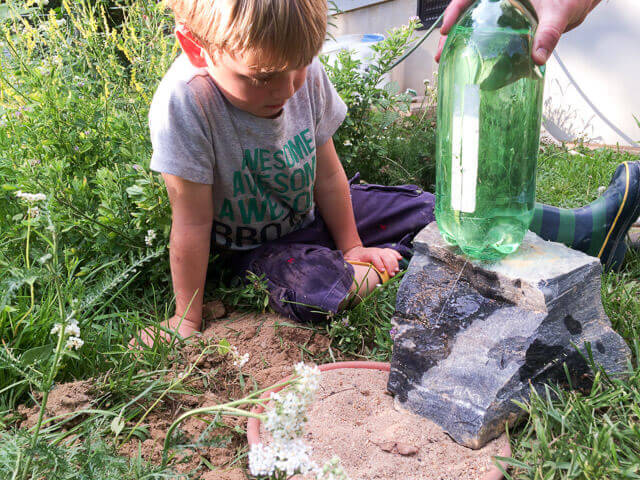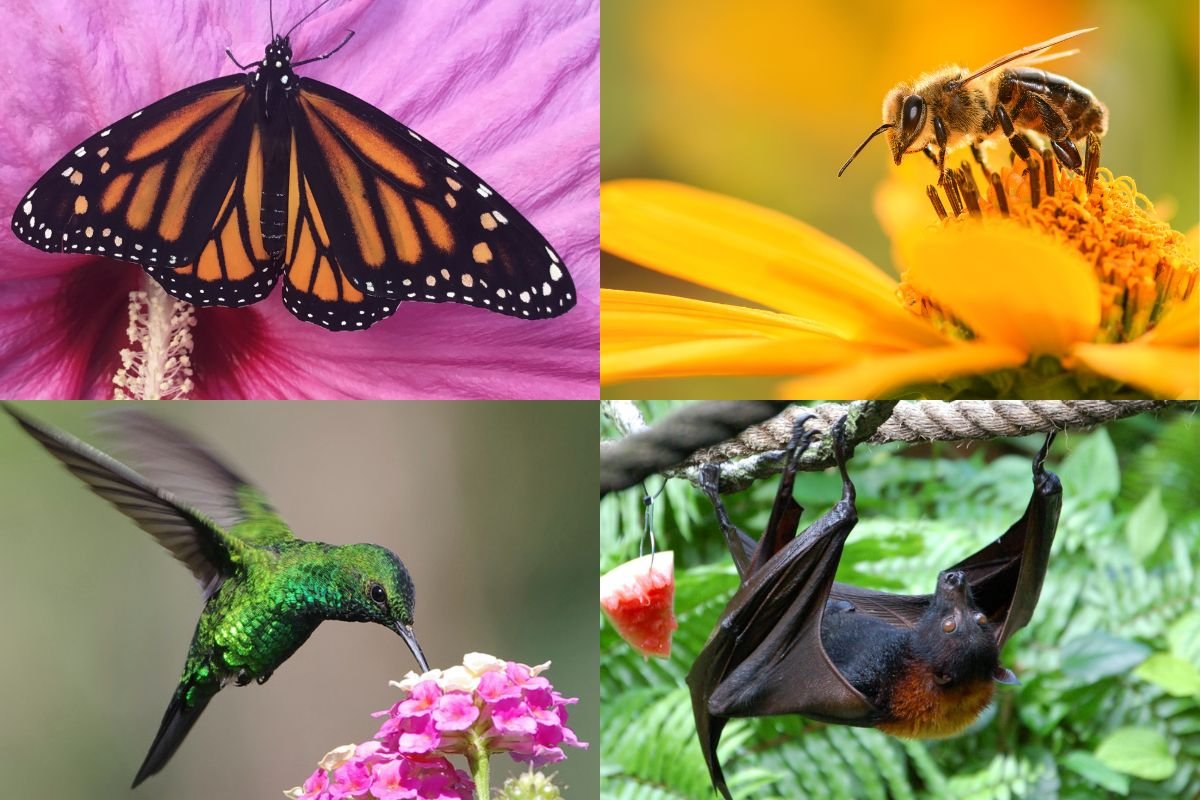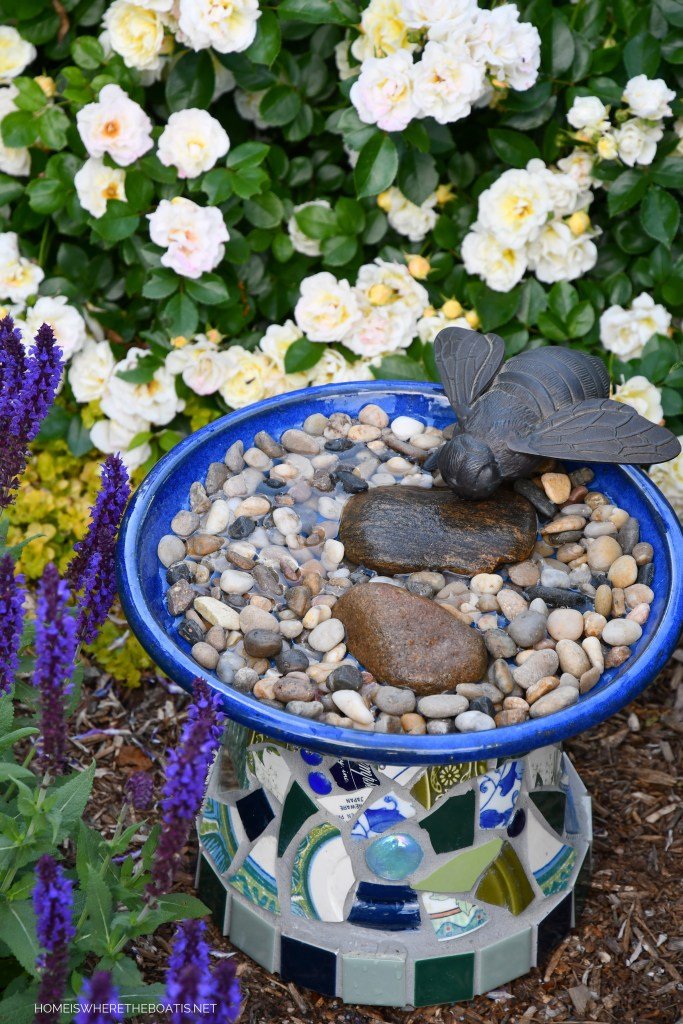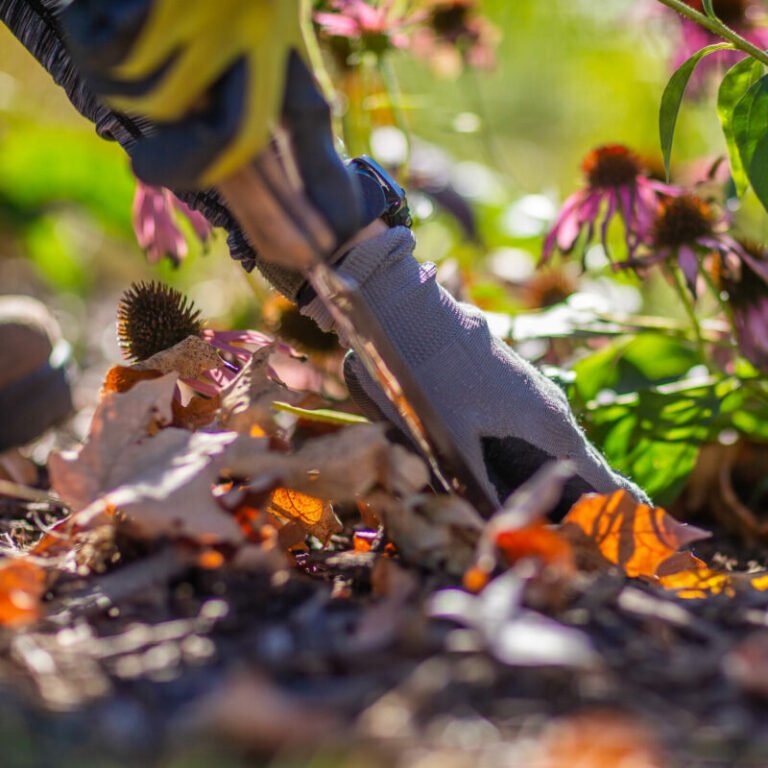Creating a garden oasis for bees, birds, and butterflies is rewarding. It turns your space into a haven for these vital creatures.
Our gardens are more than just a space for plants; they’re a sanctuary for the small wonders of nature. Bees, birds, and butterflies not only add beauty and life to our outdoor spaces, but they also play a crucial role in pollinating plants and flowers.
Ensuring these visitors have access to clean and reliable water sources is essential for their survival and the health of our environment. The best watering solutions cater to the unique needs of each species, are easy to maintain, and blend seamlessly with the natural beauty of your garden. Join us as we explore how to quench the thirst of your winged guests with the best watering practices, providing them with the hydration they need to thrive.

Attracting Pollinators With Water
Attracting Pollinators with Water brings life to gardens. Bees, birds, and butterflies need water. A simple setup can turn your garden into a haven for these creatures.
Essential Elements For A Pollinator-friendly Habitat
- Shallow water sources for safe drinking
- Stones and pebbles for landing spots
- Natural materials to blend with the environment
- Plants that provide cover and additional resources
The Importance Of Water For Bees, Birds, And Butterflies
These pollinators need water to survive. A water feature invites them. It can be a simple dish or a complex fountain. Bees make honey with it. Birds bathe and drink. Butterflies sip on puddles. All these actions help plants grow by spreading pollen.
| Pollinator | Water Need |
|---|---|
| Bees | Water for honey |
| Birds | Bathing and drinking |
| Butterflies | Puddling for minerals |
Bee Watering Solutions
Bees need water, but not all water sources are safe for them. A proper bee watering station can keep your garden buzzing with healthy bees. Let’s create a bee-friendly oasis!
Creating Bee Baths
Bee baths help bees hydrate safely. Here’s how to set one up:
- Fill a shallow dish with clean water.
- Add stones or marbles for bees to land on.
- Place the bath at ground level in a shaded area.
Change the water regularly to keep it fresh.
Safe Water Sources For Bees
Bees prefer water that’s easy to access and safe. Consider these tips:
- Use a drip irrigation system to provide a constant water source.
- Keep birdbaths clean and filled with fresh water.
- Avoid deep pools where bees can drown.
Remember, a little care goes a long way for these vital pollinators.
Bird-friendly Water Features
Creating bird-friendly water features is key for a vibrant garden. Birds need water for drinking and bathing. A good water source will attract them. Let’s explore the best ways to set up and maintain these features.
Types Of Birdbaths
Different birds like different types of baths. Here are some popular ones:
- Shallow basins are great for most birds. They should be no more than 2 inches deep.
- Hanging baths work well in small spaces. They also keep birds safe from cats.
- Ground-level baths attract a wide variety, including butterflies.
- Fountain baths provide moving water. Birds love this.
Maintaining Cleanliness And Safety
Keeping water clean and safe is crucial. Here’s how:
- Change water regularly. Every two to three days is best.
- Scrub the bath. Use a brush to keep it algae-free.
- Ensure it’s stable. Baths should not tip over.
- Place baths near cover. Birds feel safe near bushes or trees.
Remember, a clean and safe water feature will keep birds coming back. They bring life to your garden. Enjoy the beauty and songs they offer.
Butterfly Hydration Stations
Butterfly Hydration Stations are vital for these delicate insects. They need water just like bees and birds. But butterflies get water differently. They sip on puddles or wet soil. This is where they get minerals and hydration. Let’s create spaces where butterflies can thrive and drink safely.
Puddling Areas For Butterflies
Creating puddling areas is easy. These spots mimic natural puddles. Here’s how:
- Choose a sunny, protected spot.
- Use a shallow dish or a depression in the ground.
- Fill it with sand or soil.
- Add water so it’s damp, not flooded.
- Place stones or sticks for butterflies to land on.
Suitable Plants For Butterfly Watering
Butterflies need plants, too. Some plants hold water in their leaves or flowers. Butterflies drink from these. Pick these plants for your garden:
| Plant Type | Water Holding Feature | Butterfly Benefit |
|---|---|---|
| Lady’s Mantle | Cup-shaped leaves | Collects dew and rain |
| Coneflowers | Deep blooms | Holds water drops |
| Hostas | Broad leaves | Gathers water pools |
Remember, no chemicals near your butterfly spots. Keep it natural and safe for them to land, sip, and enjoy.
Diy Watering Solutions
DIY Watering Solutions bring life to gardens. They help bees, birds, and butterflies thrive. Crafting these solutions can be simple and fun. Let’s explore creative ideas to support our winged friends.
Upcycling Household Items
Turn trash into treasure. Old bowls, cups, or plant saucers can become water spots. Just fill them with fresh water and place them around your garden. Add stones or marbles for bees and butterflies to land on. They’ll sip safely without drowning.
Building A Simple Dripper System
A dripper system keeps water flowing. Start with a large container. A gallon jug or bucket works well. Fill it with water. Then, poke a small hole near the bottom. Place it above your garden bed. Water drips out slowly, creating a mini oasis.

Seasonal Considerations For Watering
Understanding Seasonal Considerations for Watering is key for helping bees, birds, and butterflies thrive. Different seasons mean changing needs for these vital garden visitors.
Adjusting Water Sources For Seasons
Each season brings unique challenges and opportunities for providing water to wildlife. Here’s how to adjust:
- Spring: Clean and refill water sources often. Wildlife is active.
- Summer: Ensure constant water supply. Heat increases thirst.
- Fall: Start reducing water sources. Prepare for winter.
- Winter: Use heated water sources to prevent freezing.
Preventing Freezing In Winter
In winter, water sources can freeze, leaving wildlife without water. Prevent this:
- Use solar water heaters. They keep water liquid.
- Place water sources in sunny spots. Sunlight reduces freezing.
- Use insulated containers. They slow down freezing.
Regular checks ensure water sources are usable, even in cold.
Incorporating Natural Water Sources
Incorporating natural water sources into gardens supports local wildlife. Ponds, streams, and rain gardens offer hydration for bees, birds, and butterflies. These features mimic nature, providing safe and accessible water. This approach benefits the ecosystem and enhances garden beauty.
Utilizing Ponds And Streams
Ponds and streams create ideal water sources for wildlife. They offer a steady water supply. Small ponds work well in many garden spaces.
- Shallow edges allow safe access for bees and butterflies.
- Adding flat stones in water gives birds a spot to perch and drink.
- Aquatic plants provide habitat and help keep water clean.
Rain Gardens As Water Reservoirs
Rain gardens trap rainwater and benefit wildlife. They prevent quick runoff. This gives bees, birds, and butterflies time to drink.
- Choose native plants that thrive in wet conditions.
- Layer soil with mulch to retain moisture.
- Position your rain garden near downspouts for optimal water capture.
Protecting Wildlife From Predators
Creating safe watering spots for bees, birds, and butterflies is crucial. These creatures need water to thrive. But, they also need protection from predators. Let’s explore smart ways to keep them safe while they hydrate.
Strategic Placement Of Water Sources
Think like a bird or a bee! Place water sources where they feel secure. High spots can deter ground predators. Also, close to shelter like bushes or trees. This gives quick escape routes. Keep these spots visible from your window to enjoy the view!
- High ground: Keeps them out of reach from many predators.
- Near shelter: Quick escapes if danger approaches.
- Clear view: For your enjoyment and to monitor safety.
Using Barriers And Repellents
Barriers can keep predators away. A fence or mesh around the water source works. Also, natural repellents. Think of herbs or plants that deter cats or other predators. These can add beauty and function to your garden.
| Barrier | Repellent |
|---|---|
| Fences | Citrus peels |
| Mesh covers | Lavender |
Place these wisely. Ensure they don’t harm wildlife. Your garden will be a safe haven for these beautiful creatures.
Monitoring And Maintenance
Creating a safe water source for bees, birds, and butterflies is key. Yet, keeping these sources clean and safe requires regular monitoring and maintenance. This ensures our tiny friends return daily. Let’s dive into how we can achieve this.
Regular Cleaning Routines
Clean water stations are a must. Dirty water can harm bees, birds, and butterflies. Follow these steps for a clean water source:
- Empty water sources weekly.
- Scrub with a soft brush to remove dirt.
- Rinse well with clean water.
- Refill with fresh water.
This simple routine keeps water safe for our friends.
Checking For Mosquito Activity
Mosquitoes love standing water. Yet, we can stop them. Here’s how:
- Use mosquito dunks that are wildlife safe.
- Change water two times a week.
- Look for eggs or larvae and remove.
This keeps mosquitoes away without harming bees, birds, or butterflies.

Frequently Asked Questions
What Is The Best Watering Solution For Bees?
Bees prefer shallow water sources with landing spots. A shallow dish filled with pebbles or marbles, and water just covering the rocks, allows bees to drink safely without drowning. This simple setup attracts bees and ensures they stay hydrated without risk.
How Do I Create A Bird-friendly Water Source?
Birds need both drinking and bathing water. A bird bath with varying depths, ideally with the shallow end being about 1-2 inches deep, attracts a variety of birds. Adding a dripper or fountain feature helps keep the water fresh and draws more birds due to the moving water.
What Water Features Attract Butterflies?
Butterflies are attracted to shallow water sources and muddy puddles, which provide minerals and salts. A shallow dish with sand, salt, and water mimics these conditions. Place it in a sunny area with protection from the wind to create an ideal butterfly watering spot.
Can Water Solutions Attract Unwanted Pests?
Yes, standing water can attract unwanted pests like mosquitoes. To prevent this, change water regularly, at least twice a week, and consider adding a small pump to bird baths or water features to keep water moving, which deters mosquito breeding.
Conclusion
Caring for our winged friends is simple yet rewarding. Choose the right watering solutions. Ensure fresh, clean water for bees, birds, and butterflies. Your garden will become a haven for these vital creatures. They pollinate plants and bring life to our ecosystem.
Start with small steps. A shallow dish or a birdbath can make a big difference. Remember to keep the water clean. This helps our flying visitors stay healthy. By providing water, you support biodiversity right in your backyard. Let’s all do our part.
Welcome these beautiful beings into our gardens. They need our help, and we can make it happen. Together, we create a better environment for everyone.



